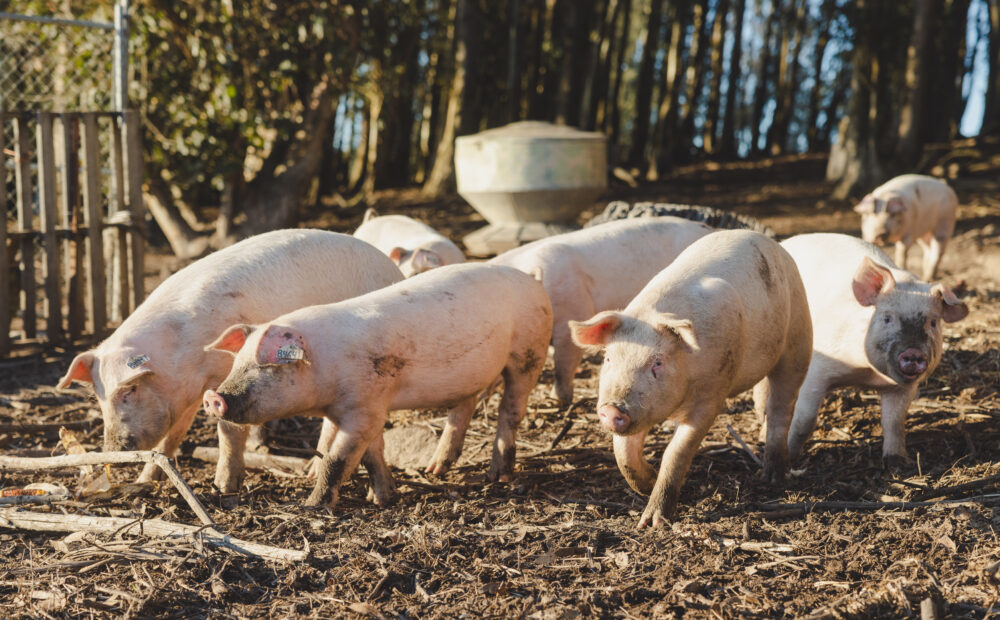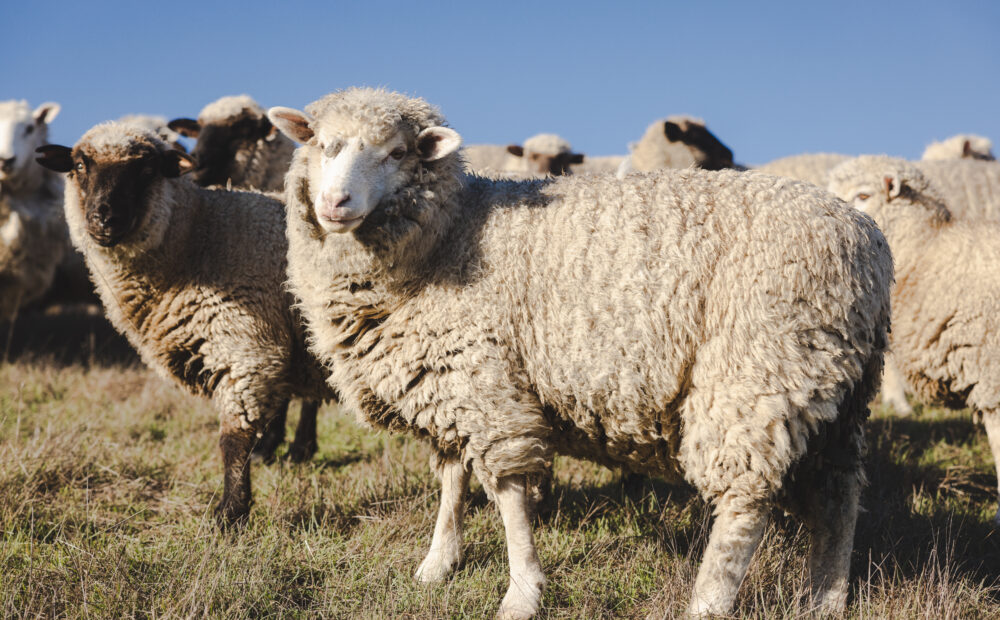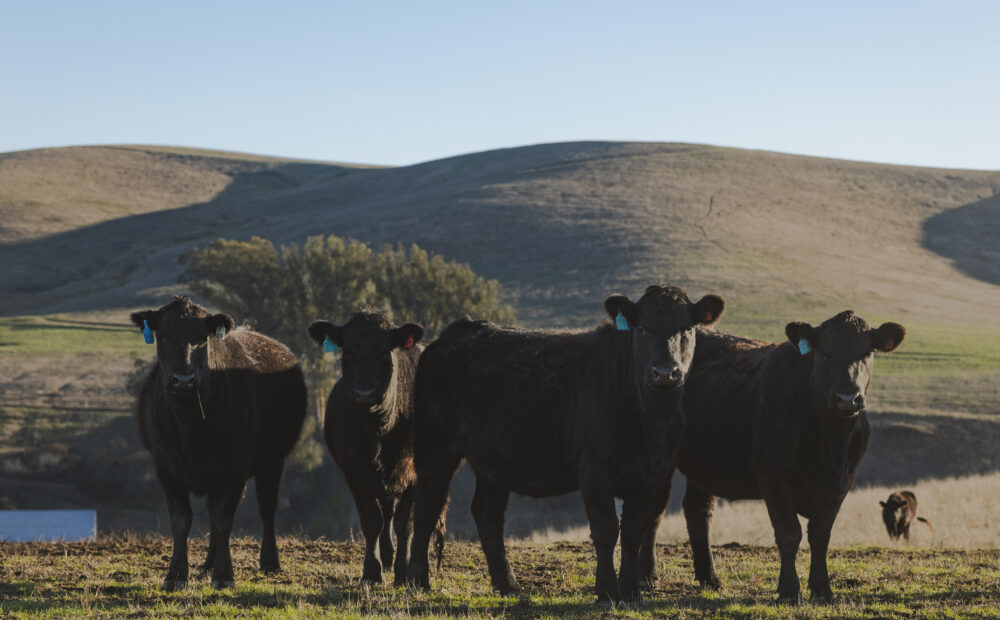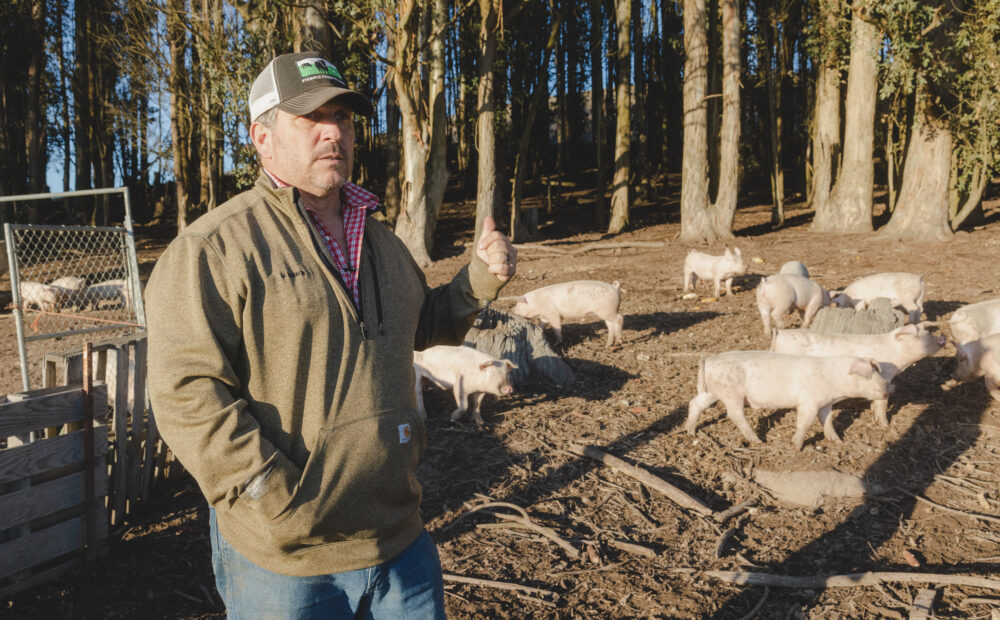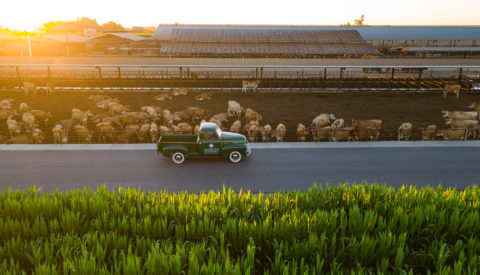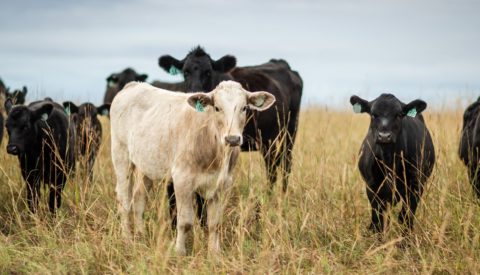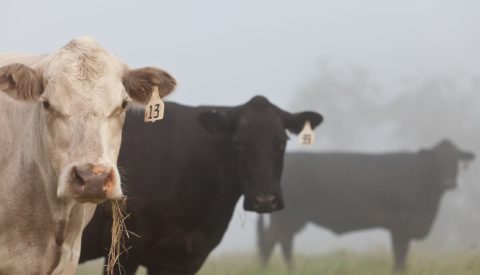Conventional cattle ranching wasn’t profitable in West Marin County. That’s why the Poncia’s changed their business model.
About 60 miles northwest of the Golden Gate Bridge sits Stemple Creek Ranch, an organic cattle operation with sheep, pigs, and 55 species of migratory birds among rolling hills and pasture grazing land. But their direct-to-consumer business model isn’t what owners Loren and Lisa Poncia first started with.
Three years into running a conventional cattle operation in Tomales, California, the Poncia’s realized it wasn’t going to make a profit. That’s why they decided to be more independent when it came to price and control of their product and income.
They created a niche product, branded it, started raising grass-fed cattle, and set up a website to sell direct to consumers. The business was so successful that Loren—a fourth generation cattle rancher who worked in the pharmaceuticals industry for 18 years—was able to quit his day job.
“It’s been nine years already since I quit my day job, and we’ve grown the business from about a million dollars in sales to about $8 million in sales in that time,” reflected Loren.
By capitalizing on the value-added market, Stemple Creek Ranch increased its bottom line.
The key to their success: regenerative ag
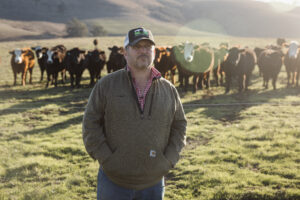
Stemple Creek Ranch’s regenerative approach starts with cattle, sheep, and pigs. When the animals graze on the land, stomp on the grass below them, and poop on the grass behind them, they help regenerate the soil and build perennial plants and biodiversity in the pastures.
The plants’ photosynthesis process ultimately pumps liquid carbon into the roots, helping sequester carbon into the soil—a critical factor since every 1% of carbon stores about 20,000 gallons of water in the soil.
“We’re in a drought-prone area where half the year we get a drought because we’re in a Mediterranean climate. So, the more carbon we have in the soil, the better it is for our drought resiliency,” explained Loren.
“Our whole dream is to have lots of carbon in the soil to make our grass greener longer, even into the dormant time of year.”
The multitude of soil cover plants are watered by five solar-powered pumps that route the water to the hilltops. Then, gravity flows the water to 40 different water troughs around the ranch. This system enabled Stemple Creek Ranch to create about 100 pastures, which in turn allows them to implement a grazing regime. They also fenced off the riparian areas where the water runs off and planted 10,000 trees.
“By default, that’s a huge carbon sink for us. But it’s also a very, very great biodiverse habitat for a lot of the creatures that are having trouble living other places. And we have 55 types of migratory birds now that nest in the creek, which is pretty amazing because it’s like the field of dreams. Basically, if you build it, they will come,” said Loren.
Earning customers’ trust
Of course, consumers come to the Poncia’s with common questions regarding an organic cattle ranch. Is it grass fed and grass finished? Is it local? Is it humanely raised? So, Stemple Creek Ranch has held an open-door policy from the beginning. From ranch tours and educational events to farm-to-table dinners, Loren and Lisa invite people out to the ranch, meet them, shake their hands, and look them in the eyes. And that’s been a win-win in many different ways.
This strategy has allowed the Poncia’s to get to know their customers and what’s important to them. For most people they’ve met, the most important characteristic is the honesty and the transparency in who Stemple Creek Ranch is and the decisions they’re making—both in how they raise animals and manage land.
“At least in this area, it’s about transparency and honesty and high quality, nutrient-dense food. And it’s exciting to be part of it,” noted Loren.
Financing made easy
Stemple Creek Ranch didn’t start their operation with financing from American AgCredit. Rather, they started with a local bank. The problem? The local bank neither understood the Poncia’s niche business nor agriculture.
“I really had to take the time to invest, to teach [the local bank] about our business, to help them understand it so that they would work with us, and making the change to work with American AgCredit really alleviated that entire job from my plate, which was amazing,” said Lisa.
Loren added, “We approached our local loan officer, Ruth McClure, and said, ‘Hey, this is what we’re doing, we’re interested in this.’”
“And the process was very smooth and easy, and me and Lisa looked at each other and said, ‘Why didn’t we do this years ago?’”
Simply put, working with American AgCredit made everything easier for Stemple Creek Ranch, because AAC speaks their language. And when farmers and ranchers are growing their businesses amid the fast-changing ag industry, it’s critical to have a lender who understands their vision.
“We have to adapt and change and give the consumers what they want. And I like business. I like marketing, I like challenges,” said Loren. “And probably one of the coolest things that we’ve ever done is we actually bought a ranch in agriculture in West Marin County with ag money, not with money that’s generated from the property. And that’s very uncommon, but it’s also really amazing for legacy. And it’s exciting, and I want to keep doing it because I like it.”

